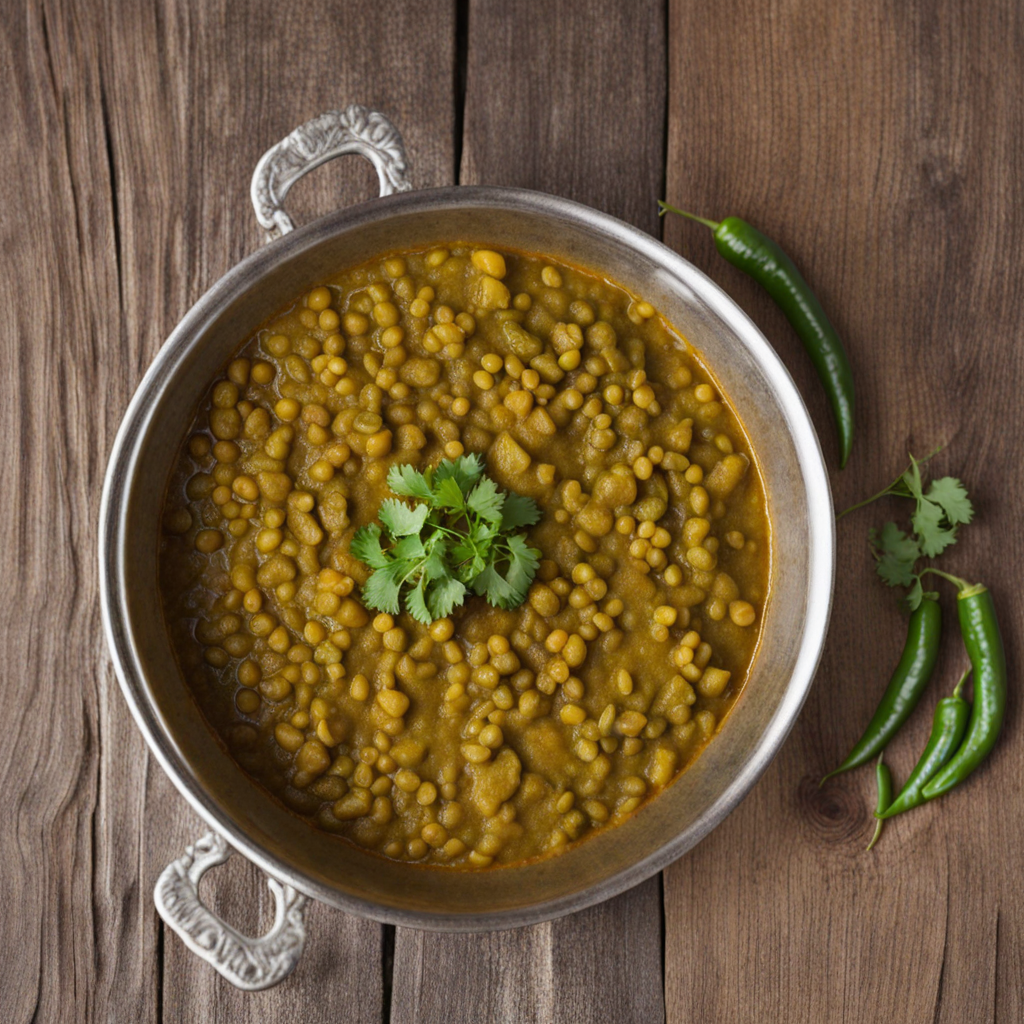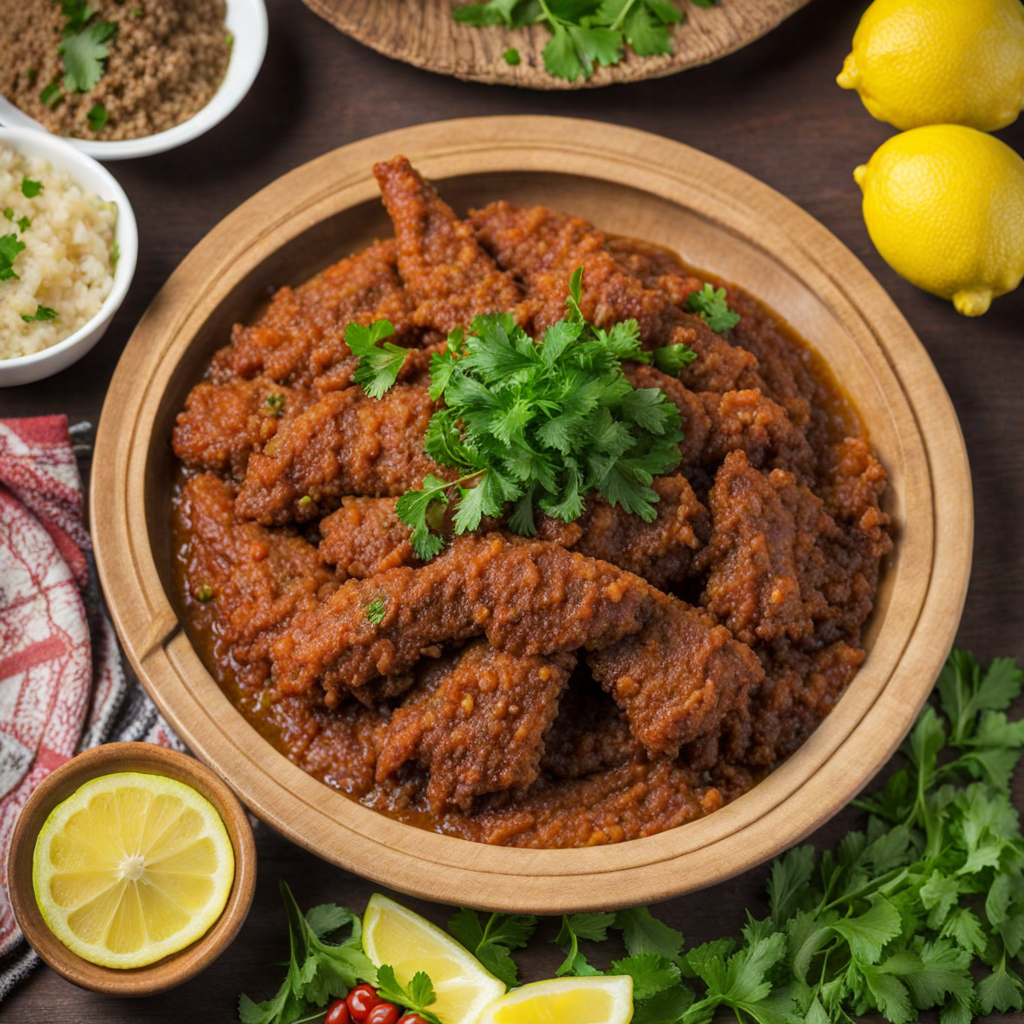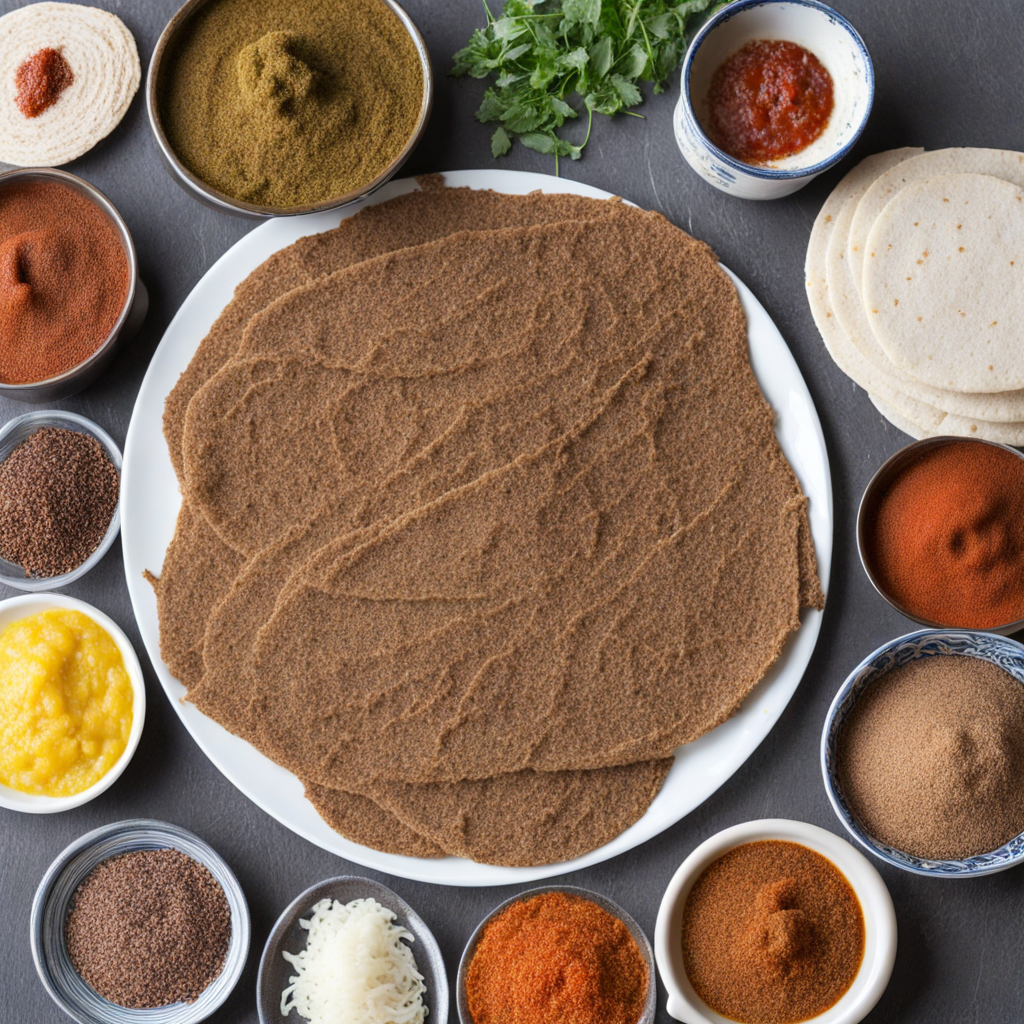Kik Alicha
Kik Alicha is a traditional Ethiopian dish that showcases the rich and vibrant flavors of the country's cuisine. At its core, Kik Alicha is a split pea stew, characterized by its beautiful golden hue, which comes from the use of turmeric. The dish is made from yellow split peas that are simmered until tender, then combined with a medley of aromatics, including onions, garlic, and ginger, all sautéed in a generous amount of Ethiopian clarified butter known as 'kibe.' This cooking fat not only adds richness but also infuses the dish with a unique depth of flavor that is truly irresistible. What sets Kik Alicha apart is its mild yet fragrant profile, making it a delightful introduction to Ethiopian flavors for those new to the cuisine. Unlike some Ethiopian dishes that pack a fiery punch, Kik Alicha is gently spiced, allowing the natural sweetness of the split peas to shine through. The turmeric not only contributes to the dish’s stunning color but also brings a warm earthiness that complements the other ingredients beautifully. This stew is often served with injera, a sourdough flatbread that acts as both a plate and a utensil, making for a fun and interactive dining experience. As part of a larger Ethiopian meal, Kik Alicha is typically enjoyed alongside other dishes, creating a harmonious balance of flavors and textures. It is a popular choice during fasting periods, given its plant-based ingredients, but it is equally cherished year-round for its comforting qualities. Whether you're savoring it at a bustling Ethiopian restaurant or trying your hand at making it at home, Kik Alicha promises a taste journey that reflects the heart and soul of Ethiopian culinary traditions.
How It Became This Dish
The History of ክክ አልጫ (Kik Alicha): An Ethiopian Culinary Tradition #### Origins and Ingredients The dish known as ክክ አልጫ (Kik Alicha) has its roots deeply embedded in Ethiopian culinary traditions, embodying the country's rich agricultural heritage and cultural practices. The primary ingredients of Kik Alicha are split peas (often yellow), turmeric, and a variety of spices. The dish is characterized by its distinctive yellow color, which comes from the use of turmeric, a spice that has been cherished not only for its flavor but also for its medicinal properties in Ethiopian culture. Historically, legumes like peas have been a staple in Ethiopian diets, particularly in the highland regions where they are grown abundantly. The consumption of legumes dates back thousands of years, with archaeological evidence suggesting that peas were cultivated in the region as early as 3000 BCE. This reliance on legumes can be attributed to their nutritional value and ability to thrive in Ethiopia's diverse climates. #### Cultural Significance Kik Alicha is more than just a dish; it is a symbol of Ethiopian hospitality and communal dining. In Ethiopian culture, food is often shared, and meals are a communal affair, bringing families and friends together. Kik Alicha is frequently prepared for special occasions, religious observances, and holidays, including fasting periods observed by Ethiopian Orthodox Christians, during which meat and dairy products are avoided. The dish serves as a comforting alternative that is both satisfying and nutritious. The preparation of Kik Alicha involves a time-honored method, often passed down through generations. Traditionally, the dish is cooked in a clay pot called a "berkuda," which enhances the flavors of the ingredients. The slow cooking process allows the split peas to absorb the spices fully, creating a rich and aromatic dish that embodies the essence of Ethiopian cuisine. Beyond its culinary significance, Kik Alicha also plays a role in the cultural fabric of Ethiopian society. It is often served during major life events, such as weddings and religious celebrations, symbolizing the importance of community and togetherness in Ethiopian culture. The act of sharing Kik Alicha with others is a gesture of goodwill, reflecting the values of generosity and hospitality that are deeply ingrained in Ethiopian traditions. #### Development Over Time As Ethiopia has evolved over the centuries, so too has the preparation and presentation of Kik Alicha. The dish has adapted to the varying tastes and preferences of different regions within the country. While the fundamental ingredients remain consistent, variations have emerged that reflect the diverse culinary landscape of Ethiopia. In urban areas, for instance, Kik Alicha may be prepared with additional ingredients such as carrots, potatoes, or other vegetables, enhancing the dish's texture and flavor. These adaptations often cater to contemporary tastes while maintaining the dish's traditional roots. Additionally, the introduction of modern cooking methods and appliances has also influenced how Kik Alicha is prepared. While traditional methods are still cherished, many households now utilize electric stoves and pressure cookers to expedite the cooking process without sacrificing flavor. The global diaspora of Ethiopians has further contributed to the evolution of Kik Alicha. As Ethiopian communities have settled in various parts of the world, they have brought their culinary traditions with them, leading to the emergence of Ethiopian restaurants and food festivals. In these settings, Kik Alicha is often showcased alongside other traditional dishes, providing a glimpse into the rich tapestry of Ethiopian cuisine for those unfamiliar with it. #### Nutritional Aspects and Modern Recognition In recent years, there has been a growing recognition of the nutritional benefits of Kik Alicha, aligning with global trends toward plant-based diets. With an increasing focus on healthy eating and sustainability, Kik Alicha has gained popularity not just among Ethiopians but also among health-conscious individuals and food enthusiasts worldwide. The dish's high protein content, fiber, and low-fat profile make it an attractive option for those seeking nutritious meals. The rise of veganism and vegetarianism in many parts of the world has also contributed to Kik Alicha's visibility. As people seek out flavorful, plant-based dishes, Kik Alicha stands out for its satisfying taste and wholesome ingredients. Many Ethiopian restaurants have embraced this trend, offering Kik Alicha as a staple on their menus, often accompanied by injera, a fermented flatbread made from teff flour, which serves as a perfect vessel for scooping up the dish. #### Conclusion The journey of ክክ አልጫ (Kik Alicha) from its ancient origins to its modern-day significance illustrates the dynamic nature of Ethiopian cuisine. As a dish, Kik Alicha is not only a source of sustenance but also a representation of Ethiopian identity, community, and tradition. Its rich history, cultural significance, and adaptability over time highlight the importance of food as a means of connection and expression within Ethiopian society. As the world continues to embrace diverse culinary traditions, Kik Alicha serves as a reminder of the beauty of sharing meals, nurturing relationships, and celebrating cultural heritage. Whether enjoyed at a family gathering, a festive celebration, or a restaurant half a world away, Kik Alicha remains a beloved dish that honors its roots while inviting new generations to partake in its rich history. In this way, Kik Alicha stands as a testament to the enduring power of food to unite and nourish communities across the globe.
You may like
Discover local flavors from Ethiopia







